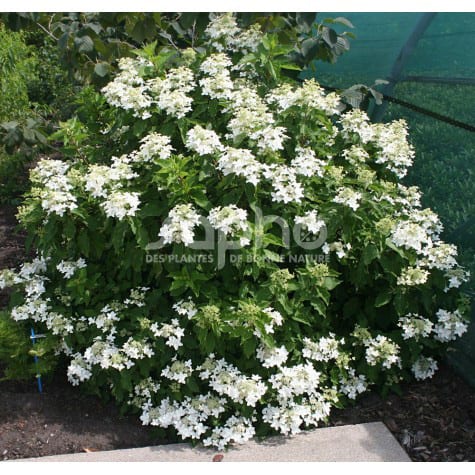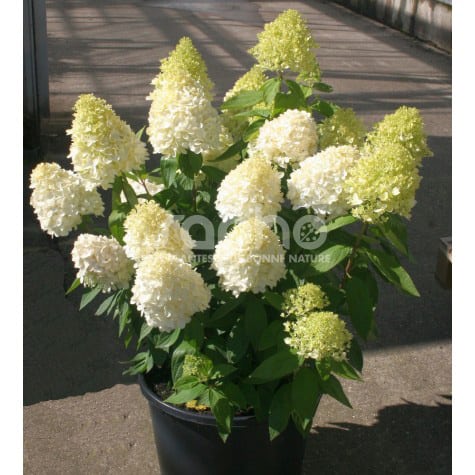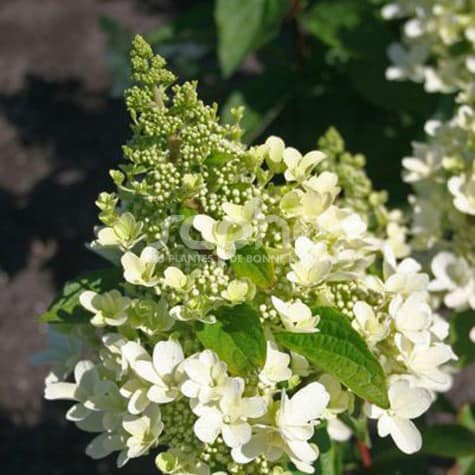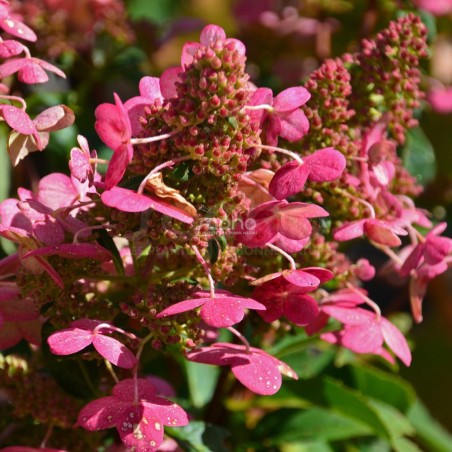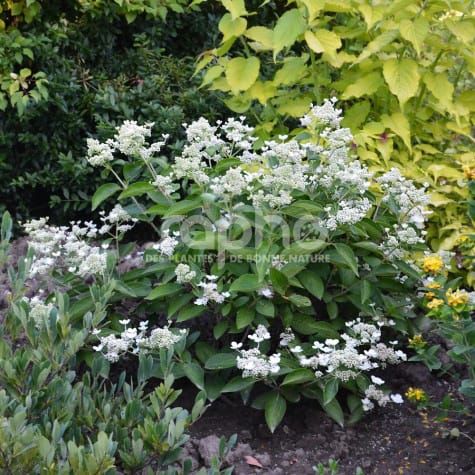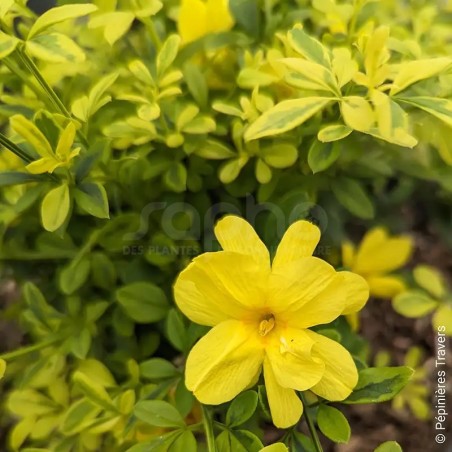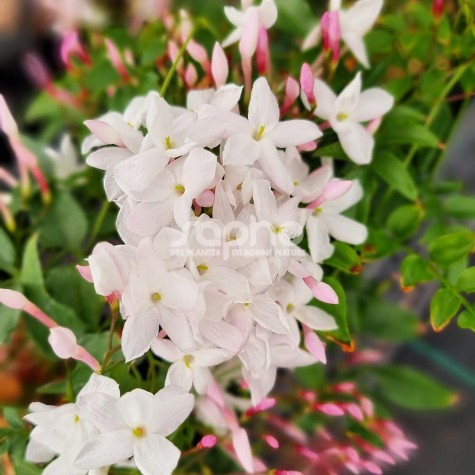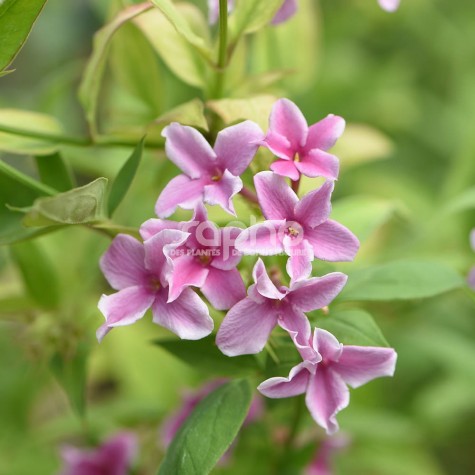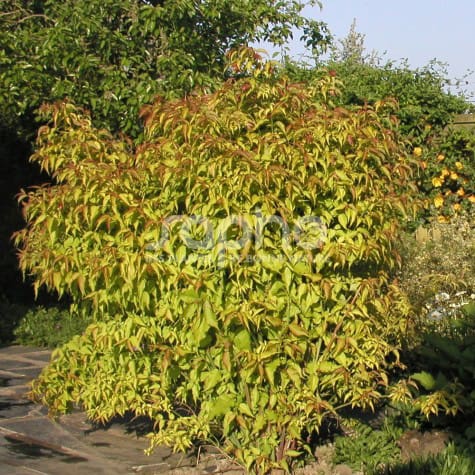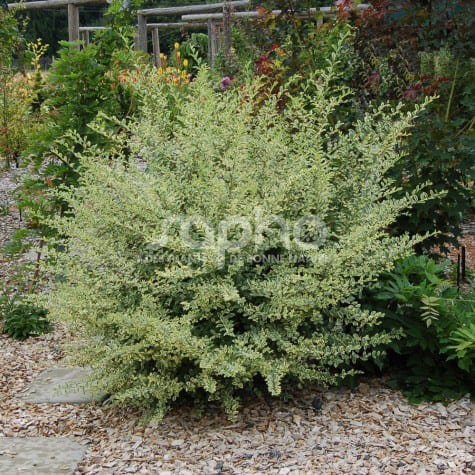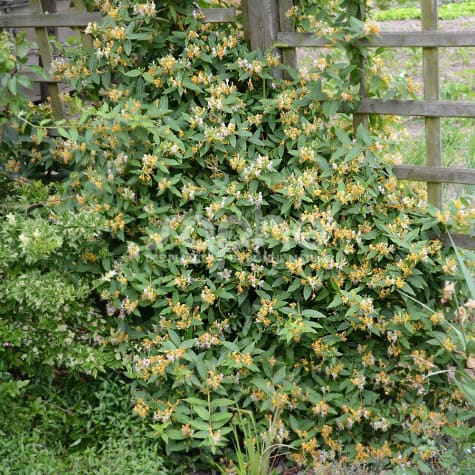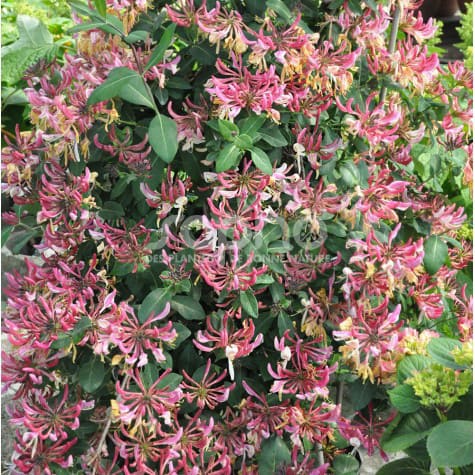Star perfume.
White and fragrant flowers whose petals form a star. Numerous and elegant panicles from July to September.
Young red stems.
Strong-growing shrub, even and well-branched.
Filter By
Foliage
Position
Where to find Sapho plants ?
For young plants
You will find the names of Sapho-licensed nurserymen at the bottom of each variety sheet.
For available plants
Please ask your nursery suppliers.
Each licensed propagator is free to market his young plants to all his customers.
Categories
Menu
All our varieties
Abundant flower heads on strong stems
SWEET SUMMER is remarkable for its about 20 - 25 cm long, dense, cone shaped panicles. The sterile flowers are at first green, then white, and finally pink, and bloom progressively from the bottom to the top, the flowers thus offer a pretty layering. The very small fertile flowers are naturally hidden. The flowers renew themselves all summer long. the shrub simultaneously carries panicles of all three shades.The flower stems are strong and stay well upright, without dropping due to the weight of the panicles in full bloom.The heads can be used as cut or dried flowers. In autumn, the foliage turns from yellow to purple red.
Trophies:
Silver Medal at PLANTARIUM 2013 (Boskoop - Netherlands)
A compact novelty with evolving colours
Magical Vesuvio is a handsome novelty of Hydrangea paniculata with evolving colours. The panicles carry sterile and fertile flowers. Readily flowering, its strongly cone-shaped panicles change during the summer from white to dark red. Its compact shape will grow no higher and wider than 1.5 m and is thus ideal for boxes, small gardens or flowering hedges.
A very early white and a summery red!Prim'Red® has been selected for its remarkable precocity and its flower colours that evolve through the season. At the end of May or the beginning of June, according to the region, the flowers open to a creamy white which very rapidly, in two or three weeks, turns pink then red. This radiant colour remains for a long time, into July and August, sustaining the interest of the plant in comparison to typical paniculata like Dahrumas, which have a tendency to fade quickly.The large panicles are elegant, containing both sterile flowers that are pink to bright red, and fertile flowers, which are bright red (except for the stamens). Prim?Red® forms a small shrub up to 1.5 m with upright stems that branch freely and naturally. Given its precocity, pruning should be light, so as not to restrict its flowering. Better still would be a simple tidying-up.
The first hydrangea paniculata of the season.
PRIM'WHITE® has been selected from seedlings of Hydrangea paniculata 'Dharuma'. Flowering on the previous year's growth, the shrub is very early flowering from the end of May or June (depending on the region), this shrub produces elegant white, slightly flat flower panicles. The abundant sterile flowers have large sepals which start cream-coloured then turn white. In good conditions a second flowering prolongs its decorative interest in August - September..This small plant with fine grey-green wood, pale green foliage and very red stalks is of small growth. Well branched, it has a more regular shape and better growth characteristics than its parent plant.The different varieties of the Hydrangea paniculata range, supplied by SAPHO, go well in a shrub border together with perennials or in a pot.
A shrubby jasmine that brightens up the garden
Bright, variegated evergreen foliage all year round
Early and generous primrose-yellow flowering
A robust, low-maintenance shrub with good resistance to drought, cold, wind and limescale, undemanding and easy to grow
A flexible shrub, that can be planted on smooth surfaces, mixed in with shrub branches or grown in pots
A jasmine with a powerful fragrance and long, generous blooms!
This variety of jasmine is the result of hybridization between jasmine polyanthum and jasmine officinalis.
It blooms abundantly from May until August, with pink buds giving way to large, exquisitely scented white flowers.
This jasmine can be used in the open ground, with a support or on a trellis, or in a large container on a terrace or balcony.
At last, a frost-resistant summer jasmine with large, fragrant pink flowers!
The pretty, abundant flowers of this variety are bicolored: deep pink edged with white, with a sweet fragrance.
This plant is robust and fast-growing.
It is ideal for planting in the ground, on a trellis or in a large container on a terrace or balcony.
Golden pheasant berryThis vigorous variety of lysteria is of dense and very ramified growth, with fine and graceful wood. Its foliage is semi-evergreen in regions with mild winters and is particularly remarkable throughout spring and summer: the young shoots have a red tint, the foliage stays golden for a long time, turning light green in summer.In July- August, GOLDEN LANTERNS are covered in abundant clusters of flowers with light pink petals turning white with very decorative dark red sepals. They make place for numerous, very ornamental dark red fruits, with purplish black berries. They last long into the autumn and are appreciated by birds.This bright selection should be planted individually, in groups or in a mixed hedge.
Luminous shrub, MUSLI® is noticeable from a distance.MUSLI® was discovered and selected as a seedling of Ligustrum ibota in Switzerland.Leaves are opposite, evergreen to semi-evergreen and remarkable for their lasting variegation, highly resistant to the sun. The young shoots are light yellow, turning white with time. The foliage is more or less variegated, light grey-green with creamy white edges, sometimes so wide that they cover the entire width of the leaf.When young, the shrub is of bushy and spreading growth with arching branches. Then MUSLI® forms an even bush with a dense centre. It is of moderate growth.In early summer, the shrub will produce clusters of fragrant white tubular, nectar bearing flowers, turning into blue-black berries, which attract the birds.This shrub tolerates cutting back and is suitable in topiary, in a monospecific or a mixed hedge. Together with other shrubs or in a pot is is very remarkable by its particularoy bright foliage.Trophies: Bronze medal at PLANTARIUM 2011 (Boskoop - NETHERLANDS)
Ever, always: dense foliage even in winter, fragrant flowers in summer, bluish fuits in autumn.This variety of climbing honeysuckle of our CAPRILIA ® range is a hybrid between Lonicera henryi and Lonicera japonica 'Aureoreticulata'.CAPRILIA ® Ever is hardy and shows good persistence in winter.This selection shows a lesser development than its parent plant Lonicera henryi.The plant flowers well in May - June, presents clusters of small flowers which stand out well against the foliage. Light violet to pink as buds and in bloom, the flowers then turn yellow orange before wilting. They are fragrant, unkike Lonicera henryi. Some second flowering is noticeable in September.Dark blue fruits appear at the end of summer and persist for a long time.The narrow, mid-green foliage resists well to blackspot, mildew and aphids.To be trained.
Imperial honeysuckle : an avalanche of beautiful red, fragrant flowers.
This selection of climbing honeysuckle of the CAPRILIA ® range derives from the Lonicera periclymenum 'Florida'. Its growth is medium.From mid June to July this flower bearing variety is particularly remarkable due to its big florets over the entire height of the plant. The fragrant flowers are carmine red in the bud stage, getting lighter on opening, turning cream, then yellow before wilting, producing a beautiful contrast.The dark green foliage shows off the flowers to their advantage. It is resistant to black spot, mildew and aphids.To be trained.

